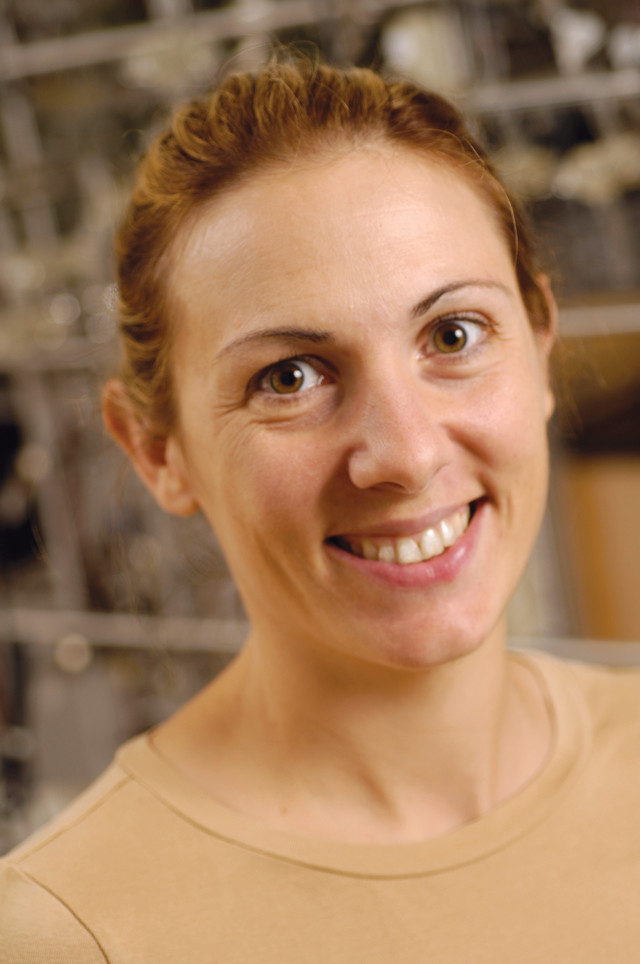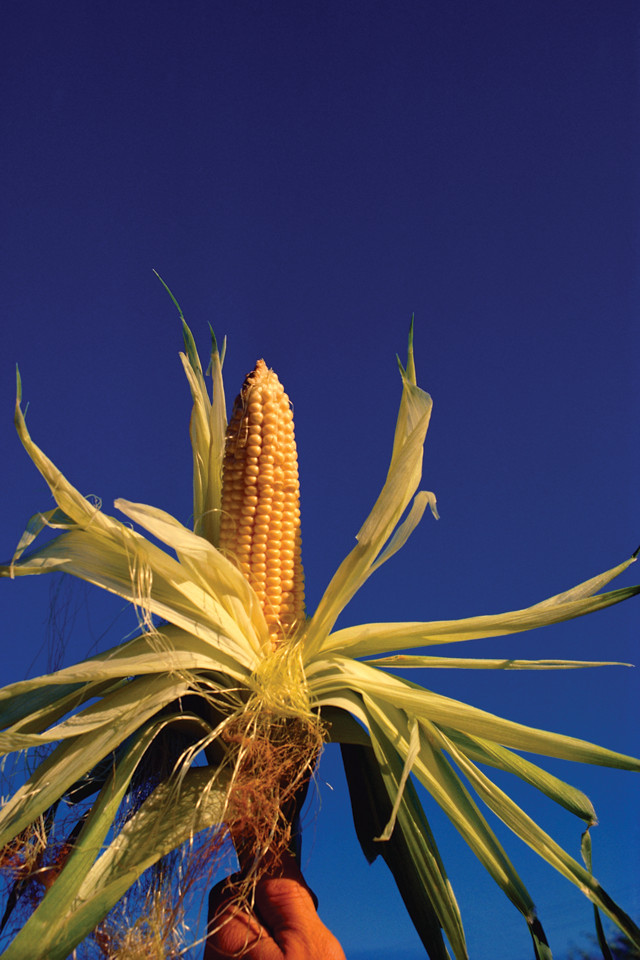
by Sam Lemonick Tuesday, May 22, 2018

Courtesy of Hope Jahren
Hope Jahren is often described as a biogeologist, but that seems too narrow a description. Currently a professor at the University of Hawaii in Manoa, Jahren has studied everything from fossils and french fries to paleoclimate and plants. After graduating from the University of Minnesota in Minneapolis in 1991 with a degree in geology, Jahren studied stream chemistry in Norway as a Fulbright scholar. She completed a doctorate in soil science at the University of California at Berkeley in 1996 and taught at Johns Hopkins University in Baltimore, Md., before moving to Hawaii in 2008. Jahren talked with freelance writer Sam Lemonick about her diverse interests and her return this year to Norway, where she has another Fulbright grant, this time to study how climate affects the growth patterns of plants.
SL: What does your stable isotope lab at the University of Hawaii focus on?
HJ: I use a type of chemical analysis to look at biological organisms — either organisms that are alive today or organisms that lived a long time ago. Stable isotopes are different flavors of the same element. The vast majority of carbon in the universe is vanilla, carbon-12. But there’s a tiny bit of, let’s say, licorice carbon out there, carbon-13. There are certain processes, like photosynthesis, that really prefer licorice over vanilla. We can use the amount of licorice that shows up in stuff to diagnose the extent to which photosynthesis has affected the system. We can see the result of processes even though we can’t see the processes, which is very useful for understanding extinct organisms or ancient systems.
SL: How have you applied the technique?
HJ: We just did a big study on french fries. It’s really fascinating because french fries are a lot like fossils in that it’s well-nigh impossible to get good basic information about how they were made. Restaurants in particular are not required to report either where the food comes from or how it’s prepared. The idea was primarily to look for corn, because corn uses an extra enzyme to perform photosynthesis, and this results in a lot more “vanilla” than you would get [with other plant oils]. We were able to extract the oil from the fries and make a quantitative prediction based on pure oils we analyzed as to the extent to which these fries had been made with corn oil. Then we looked for patterns. We compared the big fast food chains, the national chains, McDonalds, Burger King, et cetera, to mom-and-pop shops. We saw very different patterns and we reported those patterns. The very large corporations are much more likely to use corn oil when they prepare their foods.

Credit: ©iStockphoto.com/franklin lugenbeel
SL: Is that because corn oil is cheaper?
HJ: No, that’s the fascinating thing. If you go to the store or a small business goes to a distributor, corn oil is much more expensive than, say, canola oil. What we hypothesize is that you really need large-scale corporate agreements with Big Corn in order to make this type of corn-intensive fast food production economically advantageous.
SL: Your research has shifted focus somewhat over the course of your career from fossils to living organisms. Has there been a guiding force?
HJ: One thing I decided early on was I don’t want to be having the same fights that I’m having [today] 20 or 30 years from now. That would be the hallmark of a lack of personal growth. So for some of those fields, I contributed what I could and what I knew and I walked away. It’s time for younger people to get involved with new techniques and contribute to those ideas, and if I’m going to grow, I need to move on. I don’t know if living organisms are more complex than fossils, but there’s a lot more information right in front of you so in a lot of ways it’s very challenging. I’m not trained as a biologist, I’m not trained in molecular genetics or ecology or physiology so I’ve had to train myself as best as I could in those fields and that’s been really rewarding. The only thing that university teaches you is how to learn, and then you have a responsibility to yourself to push yourself and keep learning as best you can.

Credit: Corbis Images
SL: Some researchers spend their whole lives devoted to a single question or system. Why have you chosen a different path?
HJ: I think that’s a trap that you can fall into. I also think it is a very comfortable destination and I have met people whose goal is to become the expert in X. You can get to a place where you are the guy who knows about X and you’re the go-to guy and nobody questions your expertise or your authority in X. I think that’s a very safe, comfortable place to hang out intellectually. It’s a lot less comfortable to be somebody who’s really trying to contribute to a problem [in a discipline] that you don’t have sanctioned training in. To be a geologist trying to do real biology is a very scary, uncomfortable place to work.
SL: How difficult is it to try to do serious research outside your chosen field?
HJ: As a woman and somebody who [works in other fields and thus] doesn’t fit in, who will always be an outsider, the only compass I have is, “Is this making me happy and is it helping me grow?” I’m very much driven by what I find enjoyable. I feel like what I do is very indulgent. I follow problems that give me joy to think about. I think sometimes it leads to a good contribution. At the end of it, if I’ve grown as a person, then that’s almost good enough. It’s a very selfish, indulgent way to think about it, but that’s my honest take on it. It’s a good perspective to use because what will make me learn and grow as a person is a much easier question to answer than, “How can I change somebody else’s thinking?”
SL: Working outside traditional boundaries has led to a lot of collaborative work for you. Why does that appeal to you?
HJ: I like to collaborate with people who know things I don’t. I like to see if there’s stuff I can contribute that hasn’t been forthcoming or easy to do using the repertoire that people in the discipline have before them. And like a lot of people, as I’ve gotten older I find myself wanting to do something socially relevant. Has geology taught me something that would be useful for something really socially relevant like human health?
SL: What makes a geologist qualified to talk about something like human nutrition? Aren’t you out of your depth?
HJ: I’m not! Next question! [Laughs] As geologists, we’re comfortable with complex systems that we can’t lasso and subdue. Particularly when you talk about fossils, we’re grateful to have one glimmer of light from behind a closed curtain that hides a stage full of millions of complexities we can’t imagine. We’re used to taking that glimmer of light and kicking at it until it becomes a sunbeam. I think a medically healthy life is a stage that’s just as complex as that. For every unsolved problem that’s out there, there’s an opportunity for someone to come in from left field and make the tag at home.
SL: You’re in Norway again now. What are you studying there?
HJ: Norway’s a great place because [research teams there] have long experiments. They have governmental agencies that have committed really long-term resources to making data. There are forests that are protected and have been monitored since 1856. One thing that [these Norwegian] researchers found was that tree embryos that differentiate — start to grow — under high temperatures … grow in a very different way from ones that started to grow at low temperatures. Even if you put them all in the same environment, they use the climate information that they experienced as embryos to guess what future climate will be. What’s interesting to me is that there’s a kind of intentionality to the mechanism that we haven’t observed before. A lot of our ideas of evolution, particularly with plants, are based on natural selection. But when climate changes quickly, [plants] have to have something better in order to colonize new space effectively. That’s my working hypothesis. It’s great for trees at high latitudes that, when the glaciers recede, only have a few thousand years, which is maybe a hundred generations, to get the heck up to the high latitudes and take over that land before somebody else does. The stakes are really high, and this could have important implications for evolution.

Credit: Courtesy of Hope Jahren
SL: What else is happening in your lab?
HJ: We’ve been working on forensics; some more agricultural-type topics; we still work on fossils; there’s the human health stuff; we work at the North Pole. Plants become a common thread, because I love plants. Geology is great because it really forces you to stretch your imagination.
© 2008-2021. All rights reserved. Any copying, redistribution or retransmission of any of the contents of this service without the expressed written permission of the American Geosciences Institute is expressly prohibited. Click here for all copyright requests.